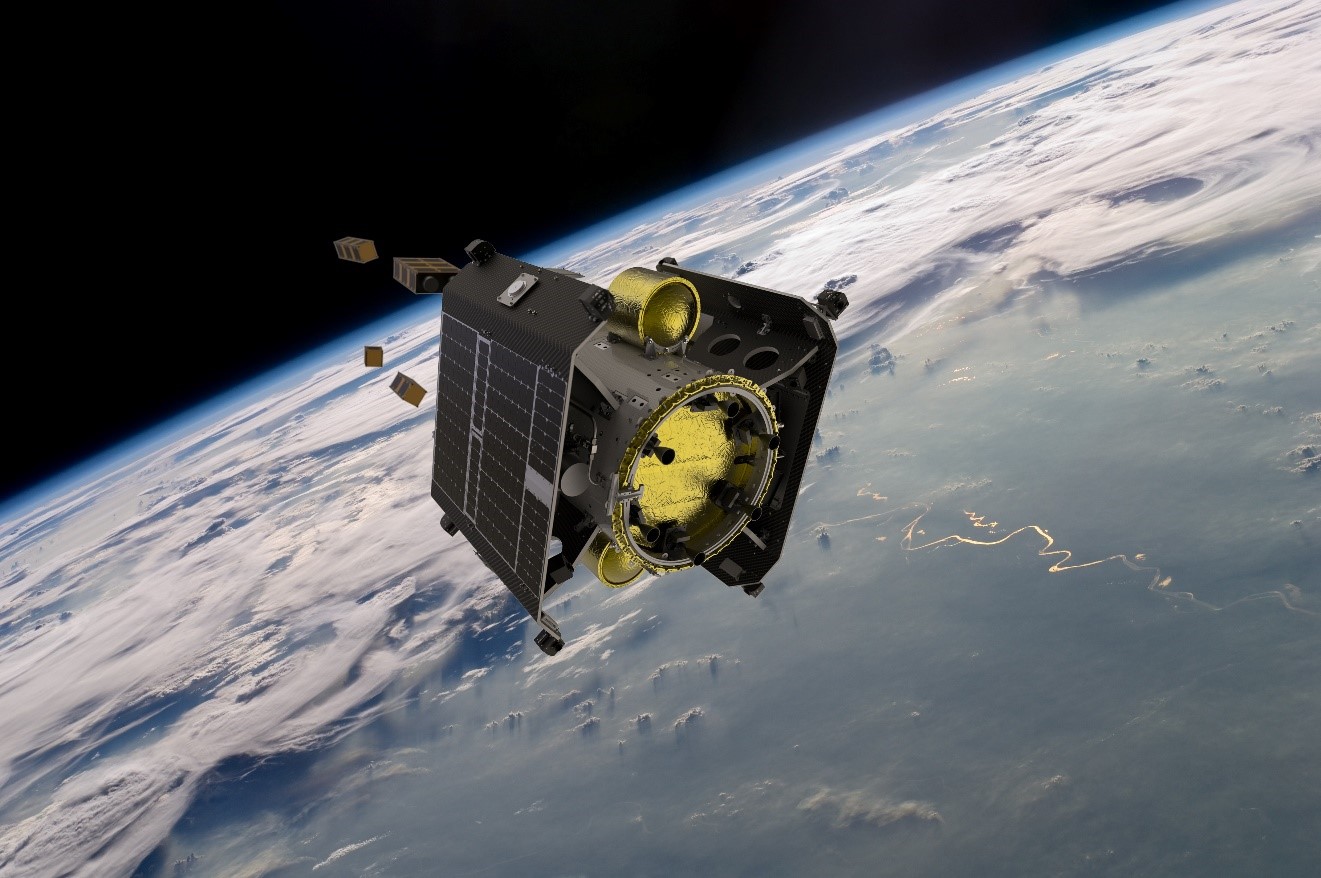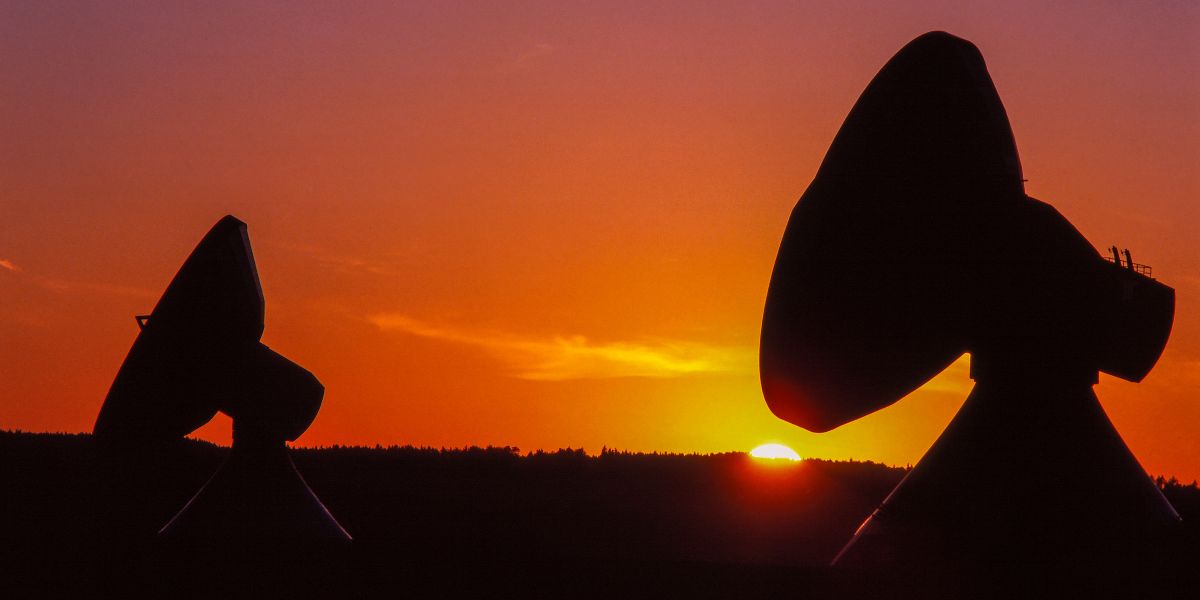AWS Public Sector Blog
Getting started with AWS Ground Station
Amazon Web Services (AWS) for aerospace and satellite presented a session at AWS Summit Washington, DC, last month entitled “Making the Most of AWS Ground Station.” If you were unable to attend, this article provides a general overview of AWS Ground Station, its key benefits, and general advice for getting started.
AWS Ground Station streamlines satellite ground segment operations
Public sector organizations and commercial enterprises alike are reaping the benefits of AWS Ground Station, which lets customers command and control satellite communications, process satellite data, and scale their satellite operations. Traditional ground station infrastructure options are expensive and can’t support ingesting, accessing, and analyzing critical downlink satellite data at scale. Launched in 2018, AWS Ground Station provides a global network of ground stations in close proximity to the global network of AWS infrastructure Regions. With AWS Ground Station, you no longer need to worry about buying, leasing, building, scaling, or managing your own satellite ground stations.
AWS Ground Station offers a pay-as-you-go model—you only pay for the actual antenna time used. Customers can schedule satellite contact times and downlink satellite payload and telemetry data directly into AWS. The data can be processed with AWS services, including low-cost storage and web publishing with Amazon Simple Storage Service (Amazon S3), real-time streaming using Amazon Kinesis, or machine learning with Amazon SageMaker.
Read more about AWS Ground Station’s key features including a global network of antennas, cross region data delivery, real-time data processing, and more.
Leveraging AWS to fuel innovation
Earth observation (EO) data is more accessible than ever before. As a result, there has been a dramatic increase in EO science. The reliable, repeatable, and accurate data now flowing from satellites is opening up the reality of operational services powered by satellite imagery.
Capella Space, for example, is a provider of on-demand EO data via synthetic aperture radar (SAR). Capella runs its entire IT infrastructure on AWS to automate and scale its operations. AWS Ground Station makes it simple and cost effective for Capella to command and control its constellation and receive its satellite data directly into AWS using a fully managed network of antenna systems located around the world. Hear more from Capella Space in this episode of the Fix This podcast.
Digital Earth Africa makes EO data more accessible, providing valuable insights for better decision-making related to prevention and planning in areas including flooding, droughts, soil and coastal erosion, agriculture, forest-cover, land use and land cover change, water availability and quality, and changes to human settlements. Fireball International uses satellite data and ground-based sensor data, combined with deep learning in the cloud, to detect wildfires fires as early as three minutes after ignition.
Satellogic is a leader in high-resolution EO data collection. Satellogic’s mission is to democratize access to high-resolution satellite imagery, unlocking the power of geospatial data to solve the world’s most pressing challenges. Satellogic is using AWS to expand quickly and effectively as the amount of data it downloads and stores continually increases.
Figure 1. How AWS Ground Station works: With AWS Ground Station, you have direct access to AWS services and the AWS Global Infrastructure including a low-latency global fiber network. For example, you can use Amazon S3 to store downloaded data, Amazon Kinesis Data Streams for managing data ingestion from satellites, and Amazon SageMaker for building custom machine learning applications that apply to your data sets.
AWS Professional Services support AWS Ground Station customers
AWS Professional Services (AWS ProServe) is a global team of experts that can help businesses realize their desired business outcomes in the AWS Cloud, including AWS Ground Station. Working with the AWS ProServe team can help you get started quickly and efficiently on your aerospace and satellite journey. By leveraging experiences from thousands of successful customer projects, the AWS ProServe team can help you achieve business outcomes more quickly, while also training your internal teams on processes, technology, and more.
One of many successful projects involved D-Orbit, a market leader in the space logistics and transportation services industry. Working alongside AWS ProServe, D-Orbit designed and built a fully automated solution that helps establish reliable bidirectional communications between D-Orbit’s satellites in orbit and its cloud-based mission control software (Aurora) in the cloud using AWS.
“AWS Ground Station integration within our Aurora mission control software is essential to managing and conducting increasingly complex missions for customer payloads on our ION Satellite Carriers,” says Bruno Carvalho, vice president of business development for D-Orbit. “Aurora is fleet or constellation ready, and AWS Ground Station helps D-Orbit to use that capability with global coverage.” Read the full case study.
AWS ProServe works together with your team and your chosen member(s) of the AWS Partner Network (APN) to help perform your cloud computing initiatives.
 Figure 2. A D-Orbit satellite in space.
Figure 2. A D-Orbit satellite in space.
AWS ProServe offerings for AWS Ground Station
AWS ProServe delivers offerings based on the most frequently seen customer objectives and needs. For AWS Ground Station, these are:
First contact
The first contact offering is designed to introduce you to the AWS Ground Station service through a guided discovery. AWS ProServe learns about your specific business goals, desired outcomes, and metrics for success and then facilitates a discovery workshop based on your needs. For customers new to AWS, AWS ProServe also assists in establishing your first AWS Cloud environment that adheres to your requirements for scalability, security, and compliance. The first contact offering also includes an AWS Ground Station demonstration and hands-on experience for your team members.
Typical duration: 1-2-week engagement
First mission
Building on first contact, you’ll need to go further by connecting with your actual satellite(s). This is the focus of first mission. AWS ProServe helps you envision, design, and implement an AWS Ground Station-based solution to connect with your satellite or satellite constellation. For uplink solutions, AWS ProServe helps you deploy a software-defined radio (SDR) in AWS and connect it to the AWS Ground Station using API services. AWS ProServe has worked with several commercially-available satellite SDRs and has experience integrating with custom on-orbit radios. Once a core solution is completed, AWS ProServe can assist you with designing, implementing, and deploying the operational automations. AWS ProServe then assists your team in deploying and testing the automated solution.
Typical duration: 2-10-week engagement
Pre-launch
The worst time to learn about a radio compatibility problem is when your spacecraft is in orbit. To reduce the risk of combability issues, the pre-launch offering is used prior to spacecraft launch to validate interoperability of a satellite’s radios with key elements of the AWS Ground Station service. In Pre-Launch, AWS ProServe develops a customized test plan to make sure that validation needs are addressed and bring an AWS compatibility test rig to your onsite location and connect it to your satellite’s radio. The AWS ProServe team conducts simulated downlink signal capture and simulated uplink transmission using the same hardware components deployed in the AWS Ground Station antenna locations. AWS ProServe then runs those captured recordings through AWS testing to determine the degree of interoperability for each communication.
Typical duration: 4-6-week engagement
Learn more about AWS Ground Station
For more information on getting started with AWS Ground Station, please contact us directly or connect through your existing AWS account manager. You can also explore additional resources included below.
Read more about AWS for aerospace and satellite:
- Earth observation using AWS Ground Station: A how to guide
- Virtualizing the satellite ground segment with AWS
- Documentation: Getting Started with AWS Ground Station
- Automated Earth observation using AWS Ground Station Amazon S3 data delivery
- D-Orbit Reduces Space Logistics Costs and Improves Visibility Using AWS Ground Station
- AWS announces the 10 startups selected for the 2022 AWS Space Accelerator
Subscribe to the AWS Public Sector Blog newsletter to get the latest in AWS tools, solutions, and innovations from the public sector delivered to your inbox, or contact us.
Please take a few minutes to share insights regarding your experience with the AWS Public Sector Blog in this survey, and we’ll use feedback from the survey to create more content aligned with the preferences of our readers.

